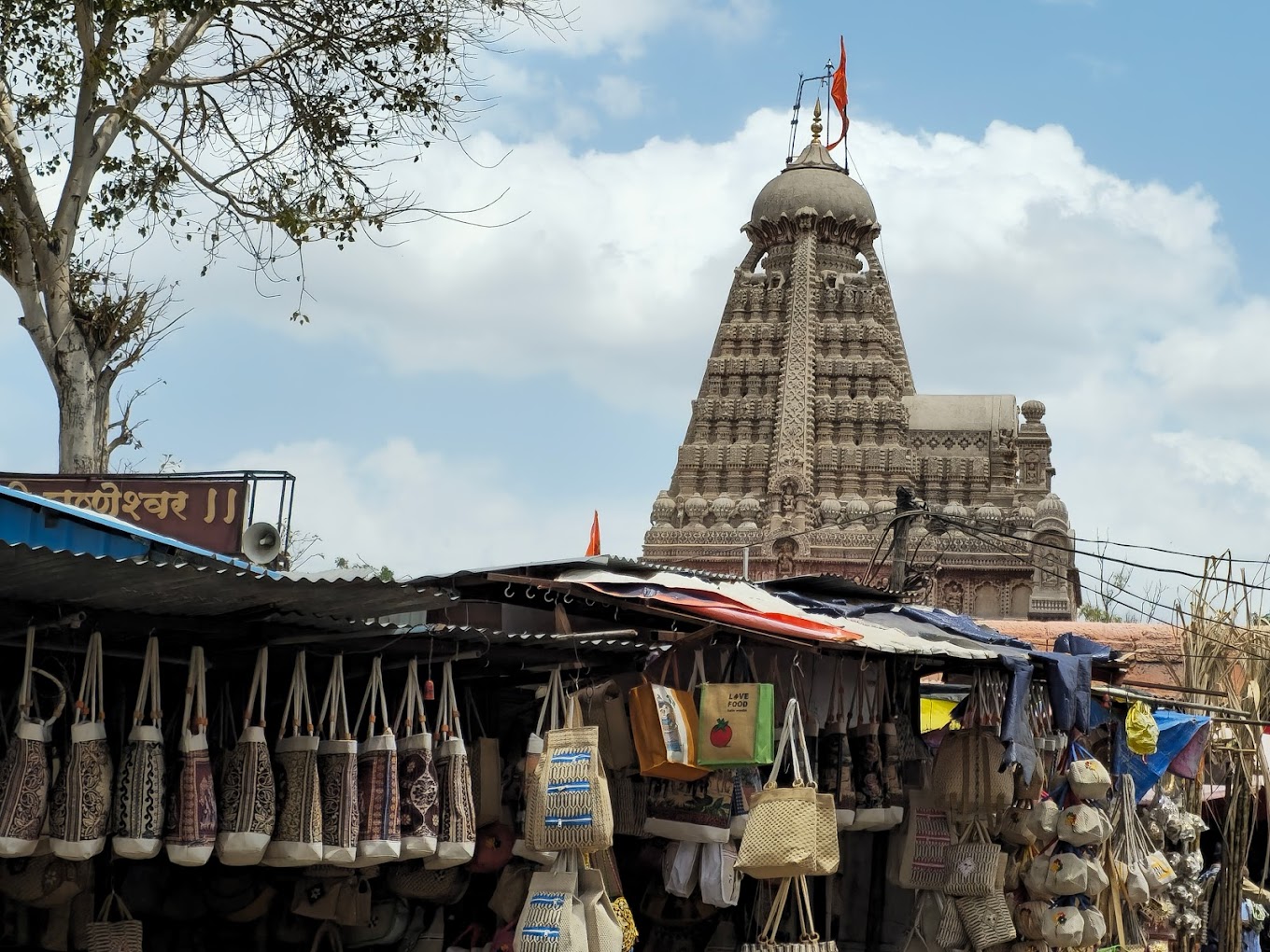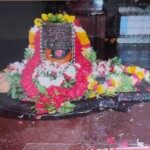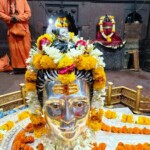
Grishneswar Jyotirlinga is one of the most revered Hindu pilgrimage sites dedicated to Lord Shiva. Located in the Aurangabad district of Maharashtra, India, this ancient temple holds immense religious and historical significance. In this article, we will explore the timings, history, image, story, location, and architecture of Grishneswar Jyotirlinga, providing a comprehensive understanding of this divine abode.
Grishneswar Jyotirlinga: An Overview
Before delving into the specifics, let’s understand the concept of Jyotirlinga and the significance of Grishneswar Jyotirlinga.
Definition of Jyotirlinga
Jyotirlinga, meaning “the radiant sign of Lord Shiva,” refers to the twelve sacred shrines where Lord Shiva is worshipped in the form of a divine lingam. These Jyotirlingas are believed to be self-manifested and carry great spiritual energy.
The Name of 12 Jyotirlingas of Lord Shiva
-
Somnath Jyotirlinga– Gir Somnath in Gujarat
-
Nageshwar Jyotirlinga– Daarukavanam in Gujarat
-
Bhimashankar Jyotirlinga– Pune in Maharashtra
-
Trimbakeshwar Jyotirlinga– Nashik in Maharashtra
-
Grishneshwar Jyotirlinga– Aurangabad in Maharashtra
-
Baba Vaidyanath Jyotirlinga– Deoghar in Jharkhand
-
Mahakaleshwar Jyotirlinga– Ujjain in Madhya Pradesh
-
Omkareshwar Jyotirlinga– Khandwa in Madhya Pradesh
-
Kashi Vishwanath Jyotirlinga– Varanasi in Uttar Pradesh
-
Kedarnath Jyotirlinga– Kedarnath in Uttarakhand
-
Rameshwaram Jyotirlinga– Rameshwaram Island in Tamil Nadu
-
Mallikarjuna Jyotirlinga– Srisailam in Andhra Pradesh
Captivating Images of Grishneswar Jyotirlinga in India
Significance of Grishneswar Jyotirlinga
Grishneswar Jyotirlinga is considered the last and twelfth Jyotirlinga among the sacred sites. It holds a special place in Hindu mythology and draws devotees from far and wide seeking blessings and spiritual enlightenment.
History and Mythology
Legend of Grishneswar Jyotirlinga
According to ancient Hindu scriptures, the origin of Grishneswar Jyotirlinga is associated with a fascinating tale. It is believed that a devout woman named Kusuma performed severe penance in order to please Lord Shiva and obtain his blessings. Impressed by her devotion, Lord Shiva granted her a boon, and she requested him to reside in the region forever. Granting her wish, Lord Shiva manifested himself as the divine Jyotirlinga, Grishneswar.
Historical Background
The historical records of Grishneswar Jyotirlinga trace back to several centuries. The temple complex underwent numerous renovations and expansions during different periods, showcasing a blend of architectural styles from various eras.
The Sacred Temple
Location and Accessibility
Grishneswar Jyotirlinga is nestled in the village of Verul, approximately 30 kilometers from Aurangabad in Maharashtra. The temple is easily accessible by road and is well-connected to major cities in the state.
Architecture and Design
The temple exhibits intricate architectural craftsmanship. Built in the Hemadpanthi style, the structure showcases beautiful carvings, sculptures, and pillars. The sanctum sanctorum houses the revered Jyotirlinga, which is the main focal point of worship.
Spiritual Significance
Devotees believe that offering prayers and seeking blessings at Grishneswar Jyotirlinga brings prosperity, fulfillment of desires, and liberation from the cycle of life and death. The tranquil ambiance and divine vibrations of the temple create a spiritual atmosphere that captivates visitors.
Grishneswar Jyotirlinga Timings
Opening and Closing Timings
Grishneswar Jyotirlinga temple opens its doors early in the morning and remains accessible to devotees until late evening. The exact timings may vary on specific days and festivals, so it is advisable to check the temple’s official website or consult the local authorities before planning a visit.
Festivals and Celebrations
The temple witnesses grand festivities during major Hindu festivals like Maha Shivaratri, Shravan month, and Diwali. Devotees throng the temple during these auspicious occasions to seek divine blessings and participate in religious ceremonies.
Worship and Rituals
Pooja and Aarti
The priests perform various rituals and offer prayers to the Jyotirlinga throughout the day. Devotees can also participate in the rituals by offering flowers, fruits, and performing abhishekam (ritualistic bathing) to the lingam.
Rituals for Devotees
Visitors can engage in various devotional activities like circumambulating the sanctum, chanting sacred mantras, and seeking blessings from the priests. It is believed that performing these rituals with utmost devotion strengthens the spiritual connection with Lord Shiva.
Popular Beliefs and Miracles
Miraculous Stories and Experiences
Grishneswar Jyotirlinga has been associated with several miraculous stories and divine experiences. Devotees believe that the Jyotirlinga possesses divine powers and fulfills sincere prayers, healing the afflicted, and bestowing blessings upon the devotees.
Divine Powers of Grishneswar Jyotirlinga
It is believed that worshipping at Grishneswar Jyotirlinga can grant liberation from sins, protection from evil forces, and enlightenment. Devotees have reported experiencing positive transformations in their lives and finding solace in times of distress.
Nearby Attractions and Travel Tips
Local Attractions
Apart from the spiritual significance of Grishneswar Jyotirlinga, the surrounding region offers a plethora of attractions. Visitors can explore the famous Ellora Caves, Ajanta Caves, and Daulatabad Fort, which are in close proximity to the temple.
Accommodation and Facilities
The village of Verul and the nearby city of Aurangabad provide various accommodation options ranging from budget hotels to luxury resorts. Pilgrims can also find facilities like restrooms, drinking water, and eateries in and around the temple premises.
Travel Tips
To make the most of your visit to Grishneswar Jyotirlinga, it is advisable to plan your trip during weekdays or non-festive periods to avoid overcrowding. Additionally, it is recommended to wear modest clothing, carry necessary essentials, and maintain a respectful demeanor within the temple premises.
How to Reach Grishneswar Jyotirlinga
To reach Grishneswar Jyotirlinga, you can follow these guidelines:
- By Air: The nearest airport to Grishneswar Jyotirlinga is Aurangabad Airport, which is well-connected to major cities in India. From the airport, you can hire a taxi or take a local bus to reach the temple.
- By Train: Aurangabad Railway Station is the closest railway station to Grishneswar Jyotirlinga. It is well-connected to various cities across the country. Once you reach the railway station, you can hire a taxi or take a local bus to reach the temple.
- By Road: Grishneswar Jyotirlinga is located in Verul village, which is approximately 30 KM from Aurangabad. You can reach Aurangabad by road through well-maintained national and state highways. After reaching Aurangabad, you can hire a taxi or take a local bus to reach the temple. Many private and public transportation options are available for a convenient journey.
It is advisable to check the road conditions, weather, and any travel restrictions before planning your visit. Additionally, using GPS or navigation apps can help you navigate through the best routes to reach your destination smoothly.
Remember to carry necessary travel documents, maintain safety precautions, and follow traffic rules while traveling to Grishneswar Jyotirlinga.
Places to Visit near Grishneswar Jyotirlinga
There are several places to visit near Grishneswar Jyotirlinga that offer a diverse range of attractions. Here are some noteworthy places worth exploring:
- Ellora Caves: Located approximately 7 KM from Grishneswar Jyotirlinga, the Ellora Caves are a UNESCO World Heritage Site known for their magnificent rock-cut caves. These caves showcase a unique blend of Hindu, Buddhist, and Jain architectural styles and contain intricate carvings, sculptures, and monolithic shrines.
- Aurangabad Caves: Situated around 30 KM from Grishneswar Jyotirlinga, the Aurangabad Caves are a group of 12 Buddhist caves carved out of basalt rock. These ancient caves date back to the 6th and 7th centuries and feature exquisite sculptures and intricate detailing.
- Bibi Ka Maqbara: Often referred to as the “Taj of the Deccan,” Bibi Ka Maqbara is a mausoleum located in Aurangabad. Built-in the 17th century, it was constructed in memory of Aurangzeb’s wife, Dilras Banu Begum. The mausoleum showcases Mughal architectural influences and is a popular tourist attraction.
- Daulatabad Fort: Situated around 15 KM from Grishneswar Jyotirlinga, Daulatabad Fort is a historic hilltop fortress known for its strategic location and impressive defensive features. The fort offers panoramic views of the surrounding landscape and houses ancient structures, including the Chand Minar and the Mughal-era palace.
- Ajanta Caves: Although a bit farther from Grishneswar Jyotirlinga (approximately 100 KM), the Ajanta Caves are worth visiting for their awe-inspiring rock-cut Buddhist cave paintings. These caves date back to the 2nd century BCE and showcase exquisite murals depicting Buddhist tales, celestial beings, and intricate designs.
- Panchakki: Located in Aurangabad, Panchakki is a historical water mill complex that houses a mosque, a tomb, and a beautiful garden. The water mill system is powered by an underground water channel that was used to grind grains and supply water to the city in ancient times.
- Bhadra Maruti Temple: Situated in Khuldabad, around 20 KM from Grishneswar Jyotirlinga, Bhadra Maruti Temple is dedicated to Lord Hanuman. The temple is known for its unique idol of Lord Hanuman, which is believed to be self-manifested and is situated in a reclining posture.
These are just a few of the many attractions near Grishneswar Jyotirlinga. Exploring these sites will provide a deeper insight into the rich historical and cultural heritage of the region.
Best Time to Visit Grishneswar Jyotirlinga
The best time to visit Grishneswar Jyotirlinga is during the winter months, from November to February, when the weather is pleasant and comfortable. The temperature during this time ranges from around 15 to 25 degrees Celsius, making it ideal for sightseeing and exploring the temple complex.
During this period, you can also witness various festivals and celebrations that take place at Grishneswar Jyotirlinga, adding to the festive ambiance. Maha Shivaratri, which usually falls between February and March, is a significant festival celebrated with great fervor at the temple.
It is important to note that Grishneswar Jyotirlinga attracts a large number of devotees, especially during auspicious occasions and festivals. If you prefer a quieter and less crowded experience, it is advisable to plan your visit on weekdays or during non-festive periods.
It is also worth considering the monsoon season, from June to September, when the surrounding landscapes turn lush green due to rainfall. However, it is important to check weather conditions and road accessibility as heavy rains may affect travel plans.
Avoid visiting during the summer months, from March to May, as the temperatures can soar, making it uncomfortable for outdoor activities and temple visits.
Ultimately, the choice of the best time to visit Grishneswar Jyotirlinga depends on personal preferences, weather conditions, and the desire to witness any specific festivals or events associated with Lord Shiva.
Restaurants near Grishneswar Jyotirlinga
There are several restaurants near Grishneswar Jyotirlinga where you can enjoy a delicious meal. Here are some popular dining options in the vicinity:
- MTDC Restaurant: Located near the temple premises, the MTDC Restaurant offers a range of vegetarian and non-vegetarian dishes. It provides a comfortable dining experience and serves traditional Maharashtrian cuisine along with Indian and Chinese delicacies.
- Hotel Kailas: Situated close to Grishneswar Jyotirlinga, Hotel Kailas is known for its vegetarian thali meals and a variety of North Indian and South Indian dishes. The restaurant offers a cozy ambiance and friendly service.
- Dharmraj Bhojnalaya: This vegetarian restaurant is renowned for its authentic Marathi cuisine and thali meals. It is a popular choice among locals and visitors alike. The restaurant serves a wide array of vegetarian dishes with flavors that cater to different tastes.
- Hotel Sai Teerth: Located in the vicinity of the temple, Hotel Sai Teerth offers a multi-cuisine dining experience. The restaurant serves a range of vegetarian and non-vegetarian dishes, including North Indian, South Indian, and Chinese cuisines.
- Mani’s Lunch Home: Situated a short distance away, Mani’s Lunch Home is a popular eatery known for its South Indian delicacies, including dosas, idlis, vadas, and filter coffee. It also serves vegetarian North Indian dishes and snacks.
- Hotel Panchavati: This family-friendly restaurant serves a variety of vegetarian dishes, including Maharashtrian, Gujarati, and Punjabi cuisines. It offers a comfortable dining atmosphere and is known for its prompt service.
These are just a few of the dining options near Grishneswar Jyotirlinga. Apart from these, you can also find small eateries and local food stalls in the surrounding areas that serve traditional Maharashtrian snacks and refreshments.
Dharamshala near Grishneswar Jyotirlinga
There are several Dharamshalas (guest houses) near Grishneswar Jyotirlinga where you can find accommodation during your visit. These Dharamshalas provide basic amenities and a budget-friendly stay option for pilgrims. Here are a few Dharamshalas near Grishneswar Jyotirlinga:
- MTDC Grishneshwar Yatri Niwas: This guest house is located near the temple premises and is managed by the Maharashtra Tourism Development Corporation (MTDC). It offers clean and comfortable rooms with basic facilities for pilgrims. The guest house also has a restaurant serving vegetarian meals.
- Shri Parshwanath Digambar Jain Dharamshala: Situated close to Grishneswar Jyotirlinga, this Dharamshala provides simple and affordable accommodation for Jain devotees. The rooms are clean and equipped with necessary amenities. The Dharamshala has a dining hall where vegetarian meals are served.
- Shri Shivpuri Dharamshala: Located near the temple, Shri Shivpuri Dharamshala offers clean rooms and basic facilities for devotees. It provides a peaceful environment for pilgrims to rest and rejuvenate during their visit to Grishneswar Jyotirlinga.
- Verul Dharamshala: Situated in Verul village, this Dharamshala offers budget-friendly accommodation options for pilgrims visiting Grishneswar Jyotirlinga. It provides clean rooms and basic amenities to ensure a comfortable stay.
- Bhakt Niwas Verul: This Dharamshala is located near the temple and provides affordable accommodation for devotees. The rooms are well-maintained and equipped with essential facilities. It offers a convenient stay option for those seeking a spiritual experience at Grishneswar Jyotirlinga.
It is advisable to book your accommodation in advance, especially during peak seasons or festivals, to secure a room in your preferred Dharamshala. Additionally, make sure to check the amenities, availability, and booking procedures of the respective Dharamshalas before your visit.
Festivals Grishneswar Jyotirlinga
Grishneswar Jyotirlinga is a place of great religious significance, and several festivals are celebrated here with enthusiasm and devotion. These festivals attract a large number of devotees who come to seek blessings and participate in the festivities. Here are some of the major festivals celebrated at Grishneswar Jyotirlinga:
- Maha Shivaratri: Maha Shivaratri is one of the most important festivals celebrated at Grishneswar Jyotirlinga. It falls in the Hindu month of Phalguna (February or March) and is dedicated to Lord Shiva. Devotees observe fasts, offer prayers, and perform special rituals throughout the night to seek blessings and attain spiritual enlightenment.
- Shravan Maas: The month of Shravan, typically falling in July or August, holds immense significance for Lord Shiva devotees. During this month, special prayers and rituals are performed at Grishneswar Jyotirlinga. Devotees often undertake Kanwar Yatra, where they carry water from the holy rivers and offer it to Lord Shiva at the temple.
- Navratri: Navratri, meaning “nine nights,” is a festival dedicated to the worship of the divine feminine energy. It usually falls in the months of September or October. During this period, various cultural programs, dance performances, and devotional music events take place near Grishneswar Jyotirlinga, creating a vibrant and festive atmosphere.
- Diwali: Diwali, the festival of lights, is celebrated with great joy and enthusiasm at Grishneswar Jyotirlinga. Devotees illuminate the temple complex with diyas (oil lamps) and decorative lights, symbolizing the victory of light over darkness. Special prayers and rituals are performed to seek blessings for prosperity and well-being.
- Shravan Somvar Vrat: In the month of Shravan, devotees observe fasts and perform special rituals on Mondays, known as Shravan Somvar Vrat. They visit Grishneswar Jyotirlinga to offer prayers to Lord Shiva and seek his blessings. This tradition is particularly popular among women seeking marital bliss and a happy family life.
These festivals offer a wonderful opportunity for devotees to connect with their faith, experience the vibrant cultural traditions, and seek divine blessings at Grishneswar Jyotirlinga. It is advisable to check the specific dates and timings of these festivals before planning your visit to the temple.
Conclusion
Grishneswar Jyotirlinga stands as a divine symbol of Lord Shiva’s presence, attracting countless devotees seeking spiritual enlightenment and blessings. With its rich history, magnificent architecture, and sacred ambiance, this revered shrine continues to inspire awe and devotion among its visitors.
Frequently Asked Questions (FAQs) about Grishneswar Jyotirlinga
Q: What is the significance of Grishneswar Jyotirlinga?
Q: What is the best time to visit Grishneswar Jyotirlinga?
Q: What are the nearby attractions to explore near Grishneswar Jyotirlinga?
Q: What are the timings of Grishneswar Jyotirlinga?
Q: Are there any accommodations available near Grishneswar Jyotirlinga?
Location Map of Grishneswar Jyotirlinga in India
Further Reading:
India Gate Delhi Entry Fee, Timings, History, Images & Location
Kalka Ji Mandir Delhi कालकाजी मंदिर,दिल्ली Timings, History, Entry Fee, Images, Aarti, Location
Akshardham Temple Delhi, History, Timings, Entry Fee, Architecture, Images & Location
Chhatarpur Temple Delhi, Pooja, Entry Fee, Aarti Timings
Best Places to Visit in New Delhi 2023
Top 13 Places worth visiting in Delhi!!
Delhi – The National Capital City with Historical Importance











